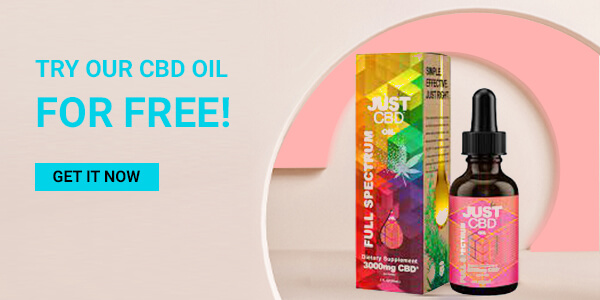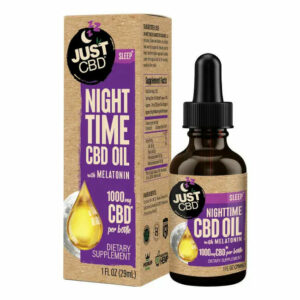What is CBD oil? How effectively is it? What are some ways that an individual can consider using CBD oil effectively? Herein are 4 ways to use CBD oil, including sublingually, topically, and by inhaling the oil.
CBD is a chemical compound present in hemp or cannabis plants. Nowadays, a successive innovation boom provides customers with multiple CBD consumption methods. Each administration route offers unique outcomes and benefits. Various cannabidiol oils have unique administration methods like sublingual, topical, oral, and vaping.
Cannabidiol (CBD) has become prominent from an unknown cannabinoid to the most renowned compound sourced from hemp or cannabis plants. It does not cause euphoric or psychoactive effects to consumers. Nowadays, a successive innovation boom provides customers with multiple CBD consumption methods. Each administration form offers unique outcomes and benefits. The wellness and food businesses are buzzing about cannabidiol for producing health benefits for consumers. Cannabidiol oil comes from the leaves and flowers of hemp or cannabis plants. The product comes in different types, including coffee blends, smoothies, topicals, and tinctures. They have unique administration methods like sublingual, topical, oral, and vaping. Learn these ways through this article to utilize cannabidiol oil effectively.
Oral CBD
Smith et al. (2018) stated that discreet and simple oral cannabidiol is an effective method to ingest cannabinoids. Swallowing many cannabidiol oil drops is the simplest and most convenient way to enjoy the product appropriately. Alternatively, people can incorporate cannabidiol oil into beverages and foods to mask its flavor. Nevertheless, numerous flavourful and exciting options exist, like infused desserts and gummy bears.
Oral Cannabidiol Products
The brand’s array provides many oral cannabidiol formulations. Also, some products have different cannabidiol potencies, and most of them enrich extra nutrients that incorporate unique features into every blend.
CBD Oil
Some cannabidiol oils come in concentrations as it is extracted from organically grown industrial hemp through the carbon dioxide extraction method. This method produces high-quality cannabidiol oil that provides an uncompromised dose of terpenes and CBD. Also, cannabidiol is available in different carriers like hemp, medium-chain triglycerides (MCT), and olive oils.
CBD Soft gels
They provide the most efficient form to take cannabidiol orally and instantly. These odorless and tasteless capsules have high-quality cannabidiol oil. Also, they are conveniently added to a present supplement routine without causing any mess.
Liposomal CBD Oil
Nanotechnology (liposomes) provides active components to specific cells and increases bioavailability. They convey CBD safely via the digestive system and straight to specific sites.
CBD Isolates
The crystal with the highest CBD concentration contains 99 percent pure cannabidiol. Individuals utilize them in producing their cannabidiol oil, such as stirring them into beverages or scattering them on meals for premium quality CBD dosage, anytime and anywhere. In addition, these products are fashioned for more innovative consumers who desire to generate their natural blends.
What Should You Know About Oral CBD?
According to Chayasirisobhon (2021), ingesting cannabidiol orally releases cannabinoids via the liver and digestive system before it penetrates the bloodstream. While in the human liver, an essential metabolic part, CBD is partially metabolized after undergoing the first-pass effect. This prolonged method implies an individual spends a longer period to experience CBD effects, approximately two hours. Additionally, not all cannabidiol swallowed becomes viable or remains intact. Some consumers absorb about 20 percent of cannabinoids in every dose (or higher with liposomal cannabidiol). Nevertheless, oral cannabidiol effects remain longer than various methods.
Sublingual (Beneath the tongue) CBD
The sublingual method involves putting cannabidiol beneath your tongue until it infiltrates into oral mucosa. This administration route provides instant onset without requiring prior preparation as the pathway is discreet, easy, and fast.
Sublingual CBD Products
CBD Oil
Before swallowing, the full-spectrum cannabidiol is placed beneath your tongue for approximately 60 seconds. Some consumers prefer this method when consuming their daily CBD oil dose.
CBD Isolate
These CBD crystals have 99 percent purity and dissolve instantly beneath your tongue. Consequently, it releases huge cannabidiol quantities into your bloodstream, although they lack full-spectrum benefits.
Meladol
This exceptional mixture combines CBD soothing potential with regulatory melatonin influence. They are designed to promote a healthy sleep routine.
What Is Sublingual CBD Administration
Sublingual administration provides effective and fast CBD effects. Cannabidiol molecules enter via a thin tissue layer beneath your tongue and instantly diffuse into cells, bloodstream, and capillaries, leading to approximately 50-50 percent bioavailability. Since sublingual administration sidesteps the human digestive tract, it takes a short period to experience the effects. Although fast, it lacks the creativity and flavor of oral CBD.
Topical CBD
According to Stella et al. (2021), topical cannabidiol does not enter the bloodstream but interacts with skin endocannabinoid receptors to maintain body supple, health, and balance. Also, its formulations have numerous molecules that maintain aging and skin health. This product affects specifically human skin because cannabinoids and various nutrients will not penetrate the bloodstream. Nevertheless, topical cannabidiol does not enter the skin epidermis to generate nourishing effects through the skin endocannabinoid system (ECS). Bíró et al. (2009) showed that cutaneous ECS controls skin functioning, delicate proliferation balance, cell differentiation, and growth. CBD topical formulations include creams, sprays, roll-ons, salves, and lotions.
CBD Inhalation
Inhaled cannabidiol enters the lungs and penetrates the bloodstream through alveoli, generating almost-instant effects. Although not suitable CBD consumption methods, most consumers tolerate vaping and smoking as calming actions. However, inhalation has high bioavailability. Inhaling cannabidiol involves majorly vaporizing or smoking. Smoking creates combustion leading to the production of carcinogenic chemicals. Thus, most cannabidiol consumers ignore this pathway for a better vaporization method. Vaporization uses low temperature to generate terpenes and cannabinoids without combustion leaving several undesirable chemicals. Technology permits consumers to choose certain temperatures to preserve the experience. However, modern cannabidiol inhalers use aerosol expertise to offer cool extracts into their lungs void of molecular degradation and carcinogens. According to Bodnár et al. (2016), inhalation has bioavailability ranging from 50-80 percent and allows customers to regulate their experience.
Conclusion
CBD oil’s effectiveness depends on an individual’s intention for consumption. This product offers different wellness, health, mental, and physical benefits. Thus, people should understand suitable CBD oil consumption methods depending on health goals. In addition, your intake method determines the product’s effectiveness and efficiency. Inhalation, topical and sublingual are the quickest CBD oil administration methods, although their effectiveness is unestablished.
Furthermore, CBD oil’s potency affects effectiveness; thus, choose the correct dosage to enjoy maximum CBD results. Consumers should utilize the method with optimum results depending on health needs and onset period. However, speak to your medical practitioner for guidance before trying CBD oil.
References
Bíró, Tóth, Haskó, Paus, & Pacher, (2009). The endocannabinoid system of the skin in health and disease: novel perspectives and therapeutic opportunities. Trends in pharmacological sciences, 30(8), 411-420.
Bodnár, Mészáros, Oláh, & Ágh, (2016). Inhaled antibiotics for treating chronic Pseudomonas aeruginosa infection in cystic fibrosis patients: challenges to treatment adherence and strategies to improve outcomes. Patient preference and adherence, 10, 183.
Chayasirisobhon, (2021). Mechanisms of action and pharmacokinetics of cannabis. The Permanente Journal, 25.
Stella, B., Baratta, F., Della Pepa, C., Arpicco, S., Gastaldi, D., & Dosio, F. (2021). Cannabinoid formulations and delivery systems: Current and future options to treat pain. Drugs, 81(13), 1513-1557.
Stith, S. S., Vigil, J. M., Brockelman, F., Keeling, K., & Hall, B. (2018). Patient-reported symptom relief following medical cannabis consumption. Frontiers in pharmacology, 9, 916.
Kristina Shafarenko is a relationship and health and wellness psychologist and a part-time freelance lifestyle writer covering health and fitness, sex, sexual wellness, and relationships. When she’s not writing, you can find her planning her next getaway, taste-testing every coffee spot in sight, and lounging at home with her cat, Buddy.
- What is Cannabidiol? - February 22, 2023
- Four ways to use CBD oil effectively - October 22, 2022
- What are CBD edibles? - October 22, 2022
















